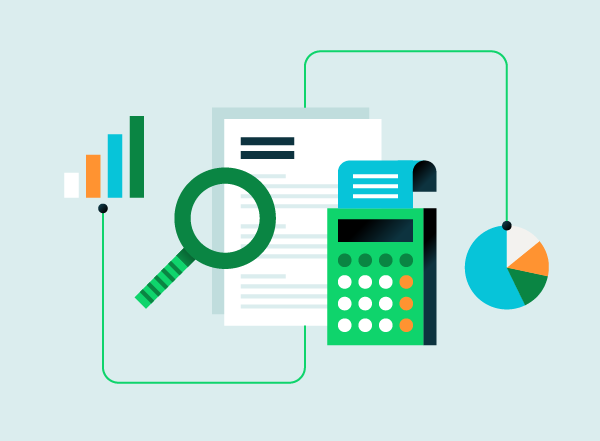How to perform a cash flow projection
Small business owners should take the time to understand their cash flow understand their cash flow. Not just to build a solid cash flow projection, but so they can recognize areas of opportunity and potential shortfalls. Follow these steps to perform a month-by-month, year-long cash flow projection. Or use them as a jumping-off point for further talks with your bookkeeper, regarding cash flow projections.
1. Estimate your sales
The first step to creating an accurate cash flow projection is to estimate your sales. Start by looking at last year’s numbers using your financial statements. These can help you predict the amount of cash that may come into your business each month next year. You’ll find your business’s credit and cash sales on your monthly income statements. But while the past is the best indicator of the future, you’ll also want to consider some changes.
For instance, if a competitor is moving into your territory, you may want to decrease your sales forecasts. But if you’re adding a new product or service to your offerings, you might expect a slight bump in cash inflow, at least in the short-term.
If you own a new business and don’t yet have a sales history, you will have to use industry research to create a reasonable sales forecast. Be sure to estimate sales for each month, not just the year.
2. Calculate when you will be paid based on the terms you offer
If you operate a business that does mostly cash sales or takes instant payment from customers, you may skip this step.
This step is for business owners who extend credit lines to their customers, send invoices, or take multiple customer payments for a single sale. The idea is to estimate when you will actually receive cash from your sales. To do that, you’ll want to calculate your days sales outstanding (DSO).
The DSO formula first divides your monthly accounts receivable by your total sales. Then it multiplies that number by the number of days in the month. The DSO formula follows:
(Monthly accounts receivable ÷ total sales) x days in the month = DSO
The DSO will tell you the average number of days it takes to receive payment from customers. So if you offer something like 30-day payment terms to your clients, the DSO will tell you how long it actually takes, on average, to receive payment. Then you can incorporate that number into your estimates.
3. Estimate your fixed and variable expenses
Next, you’ll need to estimate both your fixed and variable expenses monthly. Your fixed expenses (rent, employee salaries, insurance, etc.) don’t change.
Variable expenses tend to fluctuate with your sales. For example, your shipping costs vary because they depend on how many products you sell and ship. Your packaging, raw materials, commissions, and labor costs may also go up and down with your sales volume.
Just as you did for sales, you will need to estimate your fixed and variable expenses for each month of the next year. If you have someone like an accountant in charge of your accounts payable, they’re a great resource here. They can help you go through your sales records and estimate what your next year could look like.
If you don’t have someone who can help you with this process, you can tackle it yourself. Start a spreadsheet with columns for fixed costs and variable costs, and tally them up. Your variable costs will likely be a little trickier since you’ll have to break down many pieces. These pieces include things like material costs, labor costs, product costs, etc. If you’ve calculated your breakeven point, you can pull most of this information from there as well.
4. Put it all together
Now that you’ve calculated all the numbers you need, it’s time to put them together. Here’s how to run your current month’s projected cash flow.
Begin with the cash balance from last month’s operations, then add this month’s projected receipts, accounting for your DSO. Next, subtract your projected expenses. The formula follows:
(Last month’s cash balance + current month’s projected receipts) – projected expenses = current month’s projected cash flow
Once that’s done, you can calculate your projected cash flow for next month or the next 12 months. To do this, carry the balance from this month’s projected cash flow to the next month, and repeat the steps above. Do this for the next 12 months.
If you find yourself feeling overwhelmed, it may help to use accounting software to automate the process of generating cash flow projections. Some experts also recommend that business owners create a best-case and worst-case scenario to get the most realistic cash flow projection. Your actual cash flow will likely be somewhere in the middle.














